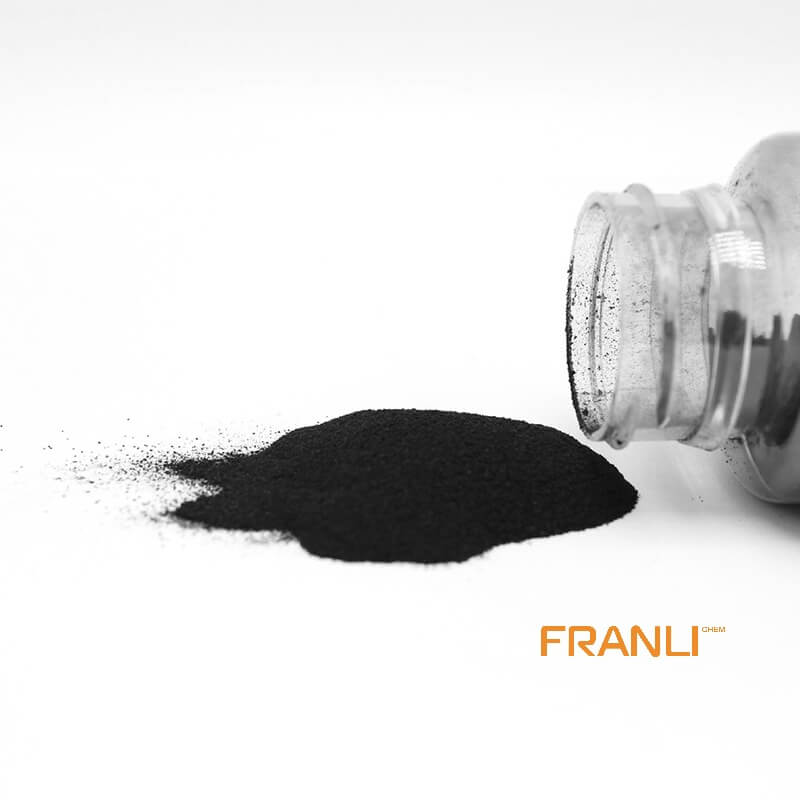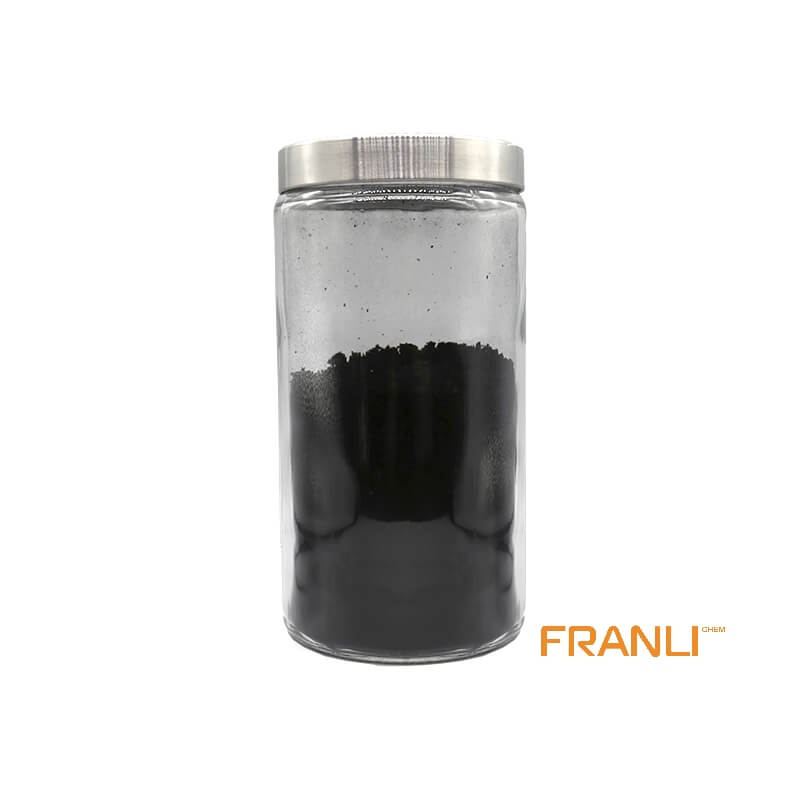

Graphene
Size
1-2nm thick x 0.5-5microns wide
Package
According to customer requirements
Features
High strength, high electrical conductivity, etc.
Application
Can be used as filler(between 0.01% and 5%).
Graphene, as the thinnest, toughest and best conductive nano material found at present. It is a two-dimensional crystal composed of carbon atoms stripped from graphite material with only one layer of atom thickness. Known as “black gold”, it is “the king of new materials”. Scientists even predicted that graphene “will completely change the 21st century”.
Request a quote
Graphene is an isomer (form) in which single-layer carbon atoms are arranged in a hexagonal lattice. It is the basic structural element of many other isomers of carbon, such as graphite, diamond, carbon, carbon nanotubes, and fullerenes.
Many years ago, people discovered steam, which brought human society into the steam age; Later, the emergence of electric power made people enter the electric age. In modern society, new material has been found: graphene, which is known as the king of new materials. People say that graphene is a revolutionary and magical material in the future. Countless praises are attributed to graphene. So what material is graphene and what’s the magic?
Graphene is a material made of carbon atoms in the form of sp ². The hexagonal two-dimensional carbon nanomaterial with honeycomb lattice composed of hybrid orbits is also the lightest material in the world. It has excellent optical, electrical, and mechanical properties. It has very important application prospects in materials science, energy, biomedicine, and so on.
In 2009, Andre Geim and Konstantin Novoselov discovered the integer quantum Hall effect in monolayer and bilayer graphene systems and the quantum Hall effect at room temperature, respectively. Before that, physicists usually thought that thermodynamic fluctuations did not allow human and two-dimensional crystals to exist at finite temperature, so this discovery immediately shocked the academic community of condensed matter physics, and they won the Nobel Prize.

After graphene is electrified, the total conversion rate of effective electric energy is more than 99%. Coupled with special superconductivity, it can ensure the stability of heating performance, so it is very suitable for application in the new heating industry.
Graphene can be said to be a substitute for silicon. When it is found that it has strong conductivity, graphene must have a place in electronic products, and graphene is the material with the best conductivity known at present. Ultra micro transistors can be manufactured to produce the next generation of supercomputers. Its stable carbon element and higher electron mobility can enable future computers to obtain higher speeds. Graphene has excellent optical, electrical, and mechanical properties. It has important application prospects in materials science, micro-nano processing, energy, biomedicine, and drug delivery. It is considered to be a revolutionary material in the future.
In addition, in biomedicine, bacterial cells can not grow on graphene, but human cells will not be damaged. Therefore, this characteristic of graphene can be used to make bandages, food packaging, antibacterial medical clothing, bedding, etc.
Graphene is the thinnest and hardest substance that has been found in the world. Jeffrey, an American engineer, vividly compares the strength of graphene: cover a graphene sheet as thin as food preservative film on a cup. If you want to pierce it with a pencil, you need an elephant standing on the pencil. See here, its hardness can be imagined.
The incredible physical properties of graphene are actually used in various thought experiments. If it can be made with at least one meter long threads, some scientists believe that these graphenes can be woven together, strong and flexible enough to become the pillar of the cosmic elevator.
Electronic information is the most important application field of graphene. The industrialization of this field determines the real value and irreplaceability of graphene. At present, the research hotspots are graphene sensors, graphene flexible electronic devices, graphene logic circuits, and so on.
In electronic technology, electrical signals are generally easier to handle. The sensor can convert various signals such as gas, light, and force into electrical signals. Graphene has a unique energy band structure and excellent electrical properties. Graphene atoms are exposed on the surface, and their electronic states are easily changed by external signals, resulting in changes in electrical properties, which are reflected by electrical signals. This characteristic enables graphene to play a great role in the field of sensors.
At present, the future development direction of electronic devices, especially smartphones, is folding and curling. As an ultra-thin and flexible two-dimensional material, graphene has excellent mechanical properties, ultra-high carrier mobility, and light transmittance. It is an ideal flexible transparent conductive film material and can be used as a new generation of flexible touch screens.
The logic circuit is the basis of computer, digital control, automation, and many other fields. It uses binary operation rules to realize logic operation. In short, we need to use the on and off of the circuit to control the computer to realize different functions. The speed of computer operation depends on the carrier mobility of circuit materials. Graphene has very high carrier mobility and is expected to be used to manufacture the next generation of ultrafast integrated circuits.
Graphene has attracted much attention in the field of energy storage because of its excellent conductivity and large specific surface area. Graphene energy storage technology is one of the earliest large-scale applications. At present, it mainly includes a graphene lithium-ion battery, graphene supercapacitor, graphene solid-state hydrogen storage, etc.

Lithium-ion batteries store and release electric energy by moving lithium ions back and forth between the positive and negative electrodes of the battery. In theory, graphene can be used as an active material to directly store lithium ions, or as a conductive material to assist the performance of batteries. In practice, the ability of graphene to directly store lithium ions can not meet the actual needs. Therefore, it is more used as a conductive agent to improve electrochemical efficiency.
Like lithium-ion batteries, supercapacitors can store and release electric energy. The storage unit power of the supercapacitor is less, but it can provide a large amount of power instantly, so it can meet the demand of instantaneous high-power discharge.
Graphene/metal oxide composites use graphene as the carrier of metal oxide to disperse it in nanoscale, which can be used as electrode active materials in PSEUDOCAPACITORS. The electrical conductivity, mechanical stability, and electrochemical properties have been improved.
Traditional hydrogen storage and transportation are mainly realized by the high-pressure gaseous method or a low-temperature liquid method. The high-pressure gaseous method has high requirements for container quality, easy to cause hydrogen leakage, and low safety. Low-temperature liquid method needs to cool hydrogen below – 200 ℃, which is expensive and a poor economy, resulting in a small application range. At the same time, both methods must use bulky tanks to bear pressure or heat preservation, resulting in huge effective mass loss and significant reduction of total hydrogen storage density.
Graphene interface nano valve is a solid-state hydrogen storage material. With high active light metal hydride as raw material, graphene interface nano valve structure is established at different groups of interfaces, and the safe, controllable and stable hydrogen release of hydrogen storage material at low temperature is realized through the noncatalytic kinetic regulation mechanism of interface nano valve.
Graphene is the material with the highest mechanical strength at present. Its elastic modulus is up to 1tpa and tensile strength is up to 180gpa. It is considered an ideal additive to enhance the mechanical properties of materials. With only a small amount of graphene, the mechanical properties such as toughness, strength, and stiffness of the material have been significantly improved.
This composite is the first material studied. The main concern is the dispersion of graphene in the matrix material and the interfacial strength between graphene and the matrix material. These two aspects directly affect the properties of composites. Commercially available graphene reinforced PLA wires, graphene tires, graphene reinforced polyurethane foam, graphene anticorrosive coatings, and so on.
In a word, the future of graphene is very broad, and people are creating a better future around graphene.



